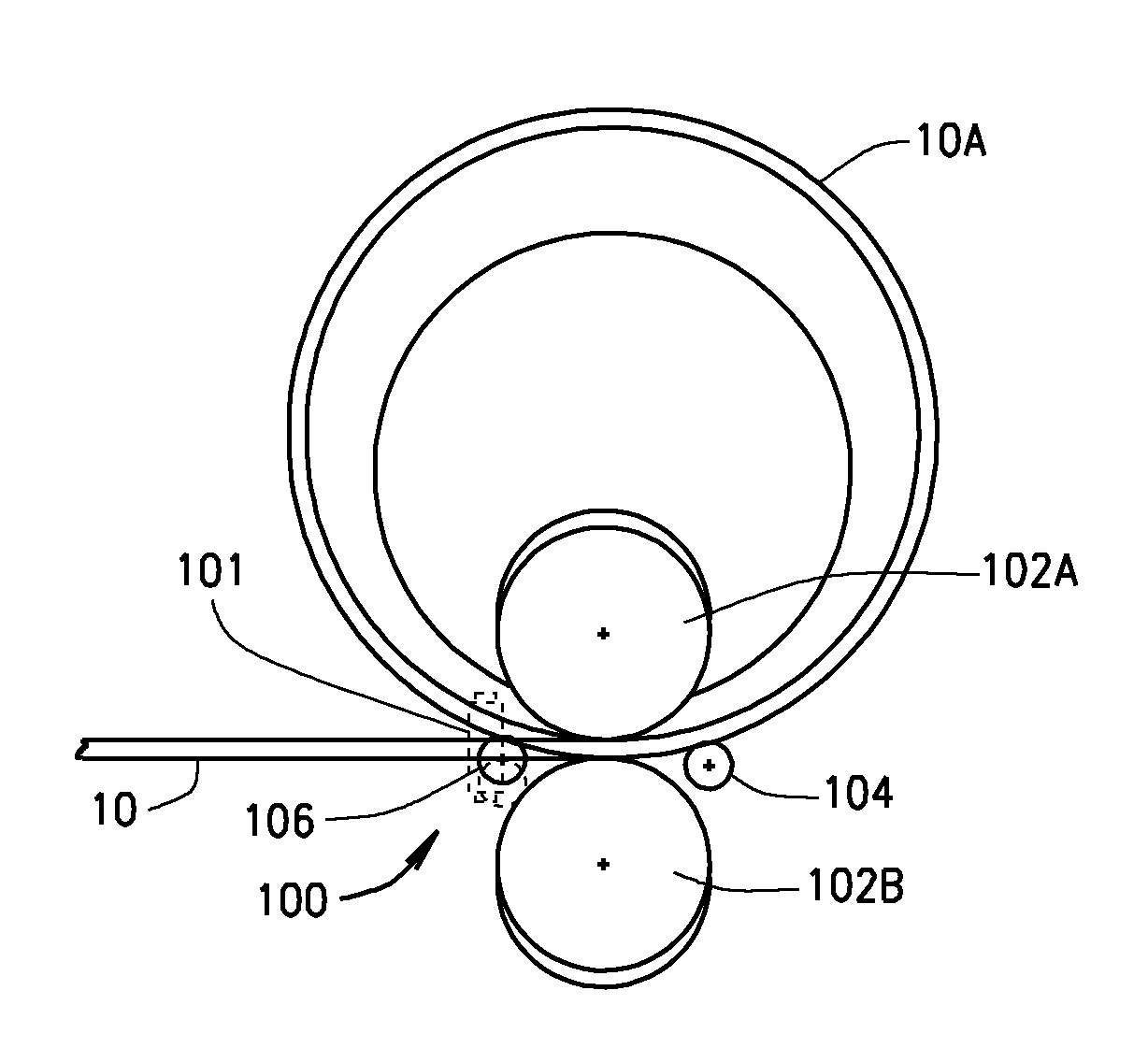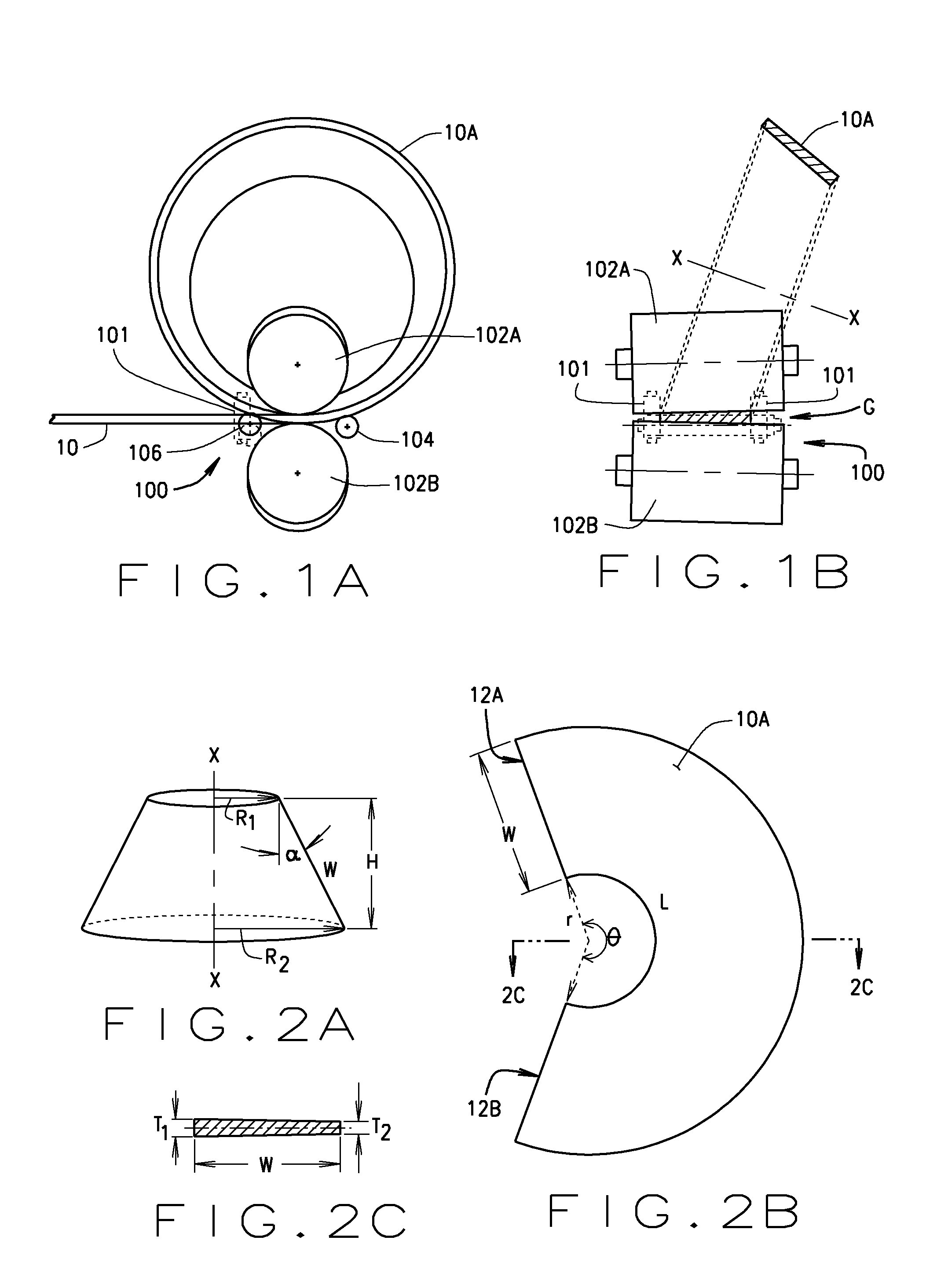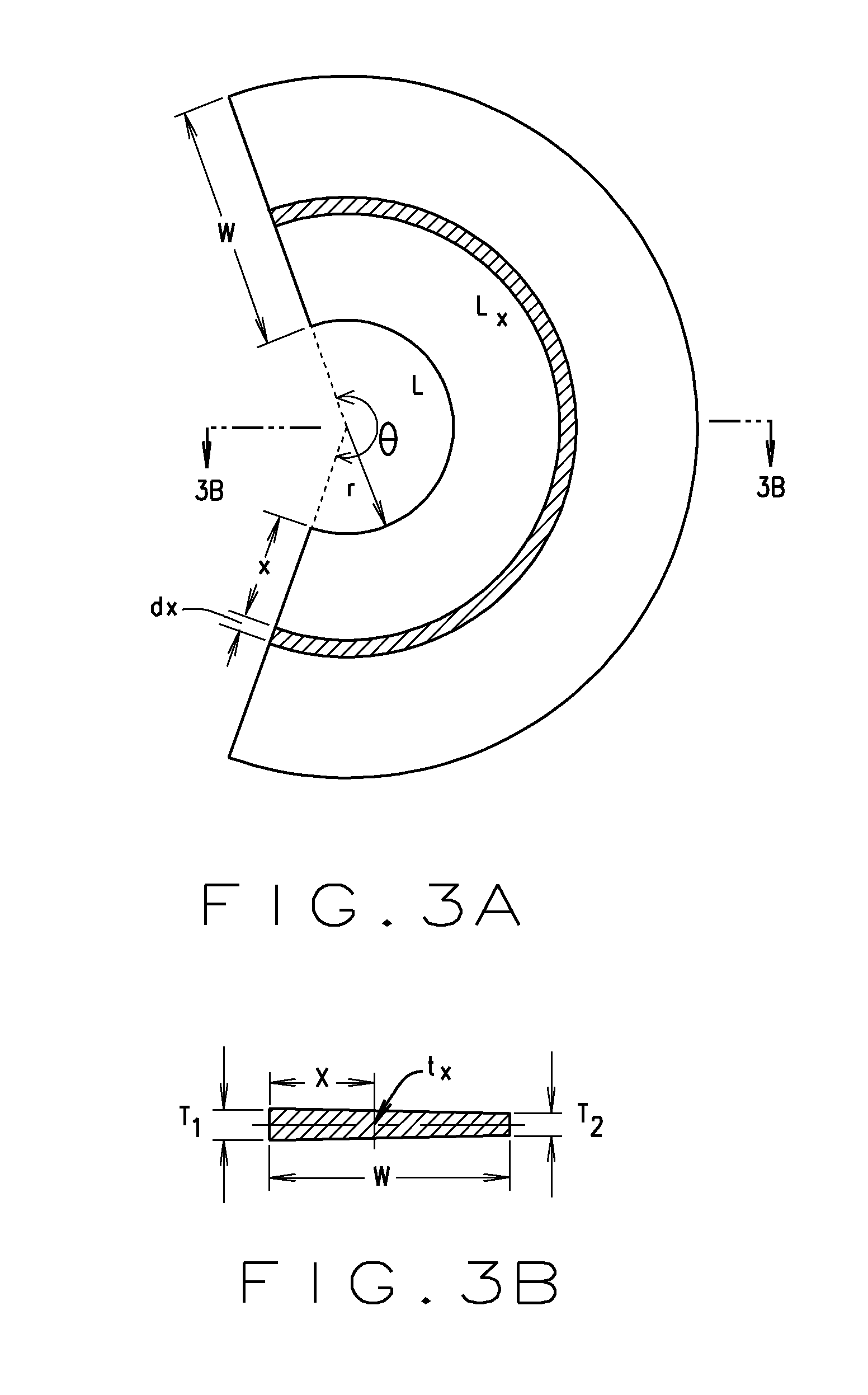Unified Rolling and Bending Process for Roller Bearing Cages
a technology of roller bearing cages and rolling bending, which is applied in the direction of mechanical equipment, rotary machine parts, engine components, etc., can solve the problems of frequent design changes, high cost, and large thickness of the cage, and achieve the effect of reducing the thickness
- Summary
- Abstract
- Description
- Claims
- Application Information
AI Technical Summary
Benefits of technology
Problems solved by technology
Method used
Image
Examples
Embodiment Construction
[0022]The following detailed description illustrates the invention by way of example and not by way of limitation. The description enables one skilled in the art to make and use the present disclosure, and describes several embodiments, adaptations, variations, alternatives, and uses of the present disclosure, including what is presently believed to be the best mode of carrying out the present disclosure.
[0023]Turning to the figures, and to FIGS. 1A and 1B in particular, it is seen that a process of the present disclosure begins with a straight metal strip or plate (cage blank material (10), hereinafter), which has been precisely dimensioned in width, length and thickness. The cage blank material (10) may be formed from any suitable material, such as steel, and may include pre-cut windows or pockets (not shown) for receiving bearing rolling elements.
[0024]The windows or pockets on the cage to constrain the bearing rollers can be made before or after the cage is rolled, by a mechanic...
PUM
| Property | Measurement | Unit |
|---|---|---|
| internal diameter | aaaaa | aaaaa |
| diameter | aaaaa | aaaaa |
| width | aaaaa | aaaaa |
Abstract
Description
Claims
Application Information
 Login to View More
Login to View More - R&D
- Intellectual Property
- Life Sciences
- Materials
- Tech Scout
- Unparalleled Data Quality
- Higher Quality Content
- 60% Fewer Hallucinations
Browse by: Latest US Patents, China's latest patents, Technical Efficacy Thesaurus, Application Domain, Technology Topic, Popular Technical Reports.
© 2025 PatSnap. All rights reserved.Legal|Privacy policy|Modern Slavery Act Transparency Statement|Sitemap|About US| Contact US: help@patsnap.com



